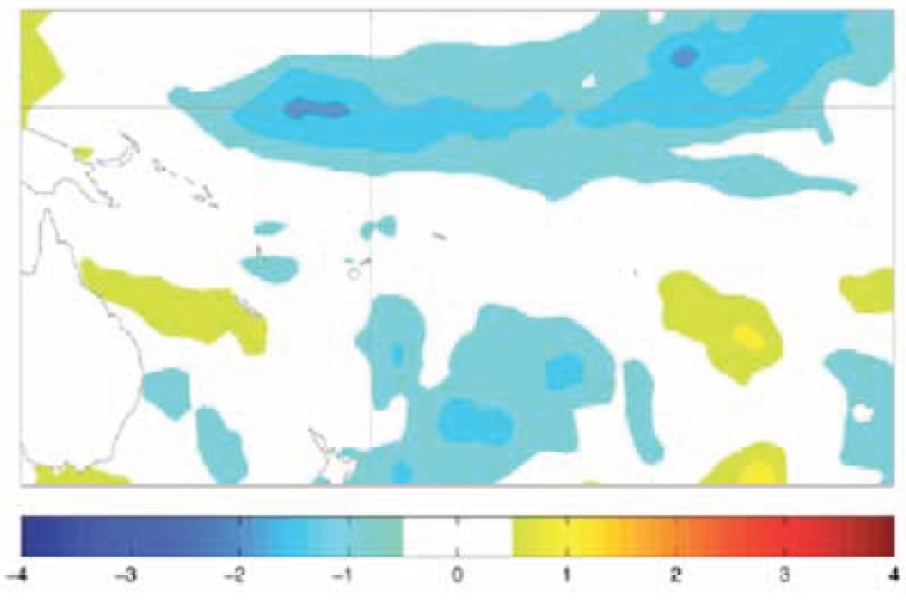A mature La Niña is in place in the tropical Pacific, and is likely to ease to neutral during autumn 2012.
The SOI eased sharply to +0.1 in February (down from +1.1 in January), while the TRMM ENSO index also eased (to -0.49, from –1.5 in January).
Sea surface temperature anomalies have also shown recent change, especially over the eastern equatorial Pacific, associated with a brief easing of the trade winds: the weekly NINO3 estimated at 0.01°C (compare to –1.2°C in January), and weekly NINO3.4 is now estimated at around –0.5°C (compare to –1.1°C in January). Sub-surface sea temperature/heat content anomalies are also weakening in the eastern equatorial Pacific region.
Four of the ten dynamical models NIWA monitor predict neutral conditions for autumn (MAM); four predict La Niña, and 2 indicate neutral or cool. The majority of the dynamical and statistical models indicate neutral conditions for JJA, with three now developing El Niño.
The latest IRI technical summary of 16 February indicates gradual weakening of La Niña during the coming one to two months as subsurface heat content anomalies, SSTs, low-level winds and convection anomalies continue to weaken along with feedbacks between ocean and atmosphere. They forecast a 38% chance of La Niña and 62% chance of neutral conditions for March – May as a whole.
Notably, they expect the highest likelihood of La Niña dissipation in the first half of April and note that past experience has shown that some models are biased in the direction of prolonging ENSO episodes for somewhat too long a period at the end of the typical ENSO cycle.

